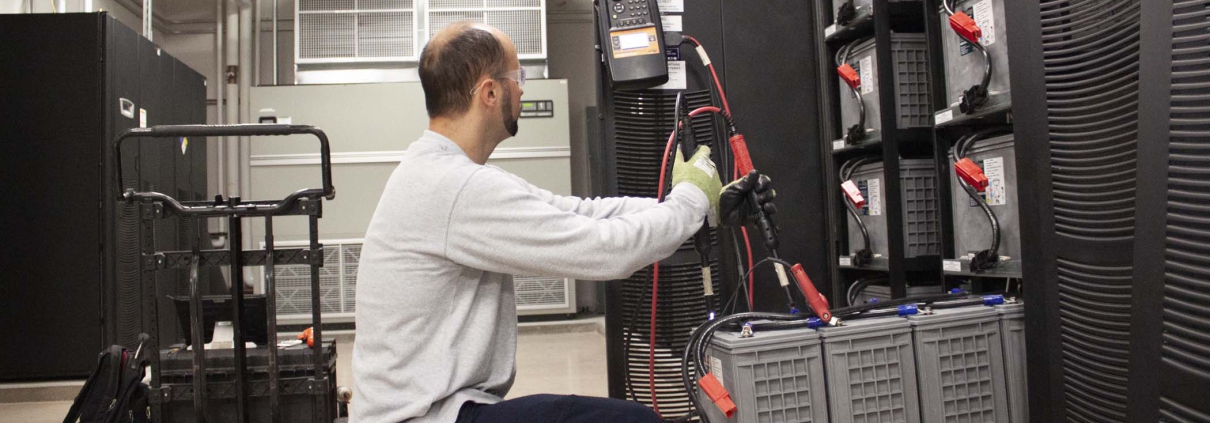Industrial Uninterruptible Power Supply Market Outlook: Trends, Opportunities, and Strategic Insights for Distributors
The industrial uninterruptible power supply (UPS) market is entering a new growth phase driven by automation, electrification, grid instability, and the rising importance of digital infrastructure across manufacturing and critical facilities. For distributors, importers, and UPS channel partners, understanding where the market is heading is essential for making accurate inventory decisions, evaluating product portfolios, and planning future investments.
Unlike consumer-grade UPS products, the industrial UPS segment is shaped by long-term infrastructure cycles, meaning early insights into technology shifts and regional demand can significantly influence margins and competitive position. This article provides a distributor-focused analysis of the industrial UPS landscape—covering market drivers, technology evolution, demand segments, and where the strongest opportunities are emerging.
- What Defines the Industrial UPS Market?
Industrial UPS systems are engineered to support mission-critical loads in environments where:
- Power quality fluctuates
- Shutdowns cause safety or production losses
- Sensitive equipment requires controlled shutdown
- Short-duration, high-power backup events matter more than extended runtimes
Typical application areas include:
- Manufacturing plants
- Oil & gas and petrochemical facilities
- Mining operations
- Water and wastewater treatment
- Industrial control systems (SCADA, substations)
- EV charging infrastructure
- Automated logistics and robotics systems
These markets require UPS systems ranging from 1 kVA to multi-MVA, designed for harsh environments and continuous duty cycles.
- Global Market Trends Shaping Industrial UPS Demand
2.1 Increasing Grid Instability
Industrial operations continue to experience:
- Voltage dips
- Sags and surges
- Micro-outages
- Harmonic distortions
Even short interruptions can disrupt robotics, controls, and high-precision manufacturing, increasing demand for short-runtime, high-power industrial UPS systems.
2.2 Advancing Industrial Automation
The shift toward digital, automated manufacturing is accelerating adoption of:
- Robotics
- Drives and VFD systems
- PLCs and industrial PCs
- IoT-driven control networks
As facilities become more electrically complex and sensitive, UPS protection becomes a core requirement.
2.3 Distributed Industrial Facility Expansion
North America is seeing ongoing investment in:
- Advanced manufacturing
- Water infrastructure
- Energy and microgrid systems
- AI-driven logistics
- Semiconductor production
Each facility adds multiple UPS load points, increasing cumulative demand for industrial UPS hardware.
- Technology Shifts Reshaping the Industrial UPS Market
This is where distributors should pay closest attention. Three major technology transitions are accelerating:
3.1 Shift from VRLA to Lithium UPS
Lithium UPS adoption is accelerating due to:
- Higher cycle life
- Faster recharge
- Longer lifespan
- Higher temperature tolerance
- Reduced maintenance
These advantages are positioning lithium units as the preferred option in automation lines, EV charging sites, and facilities seeking lower total cost of ownership.
📌 Recommended further reading (battery technology comparison):
VRLA vs Lithium Battery for UPS — A Practical Guide for Data Center Backup Power
https://leochlithium.us/vrla-vs-lithium-battery-for-ups-a-practical-guide-for-data-center-backup-power/
3.2 Surge in Short-Time Backup UPS Adoption
An important trend is the growing demand for 10–60 second runtime UPS systems, especially in:
- Motor-start applications
- Robotics and automation
- High-speed production lines
- Facilities requiring voltage sag protection
- Environments where long backup duration is unnecessary
This category is one of the fastest-growing segments in the industrial UPS market.
👉 Appropriate product reference (inserted once):
For operations requiring high-power, short-duration protection, distributors can evaluate dedicated solutions such as the PU UPS Short-Time Backup Power Series:
https://leochlithium.us/pu-ups-short-time-backup-power-series/
3.3 Integration with Industrial Networks
Modern industrial UPS solutions increasingly support:
- SCADA integration
- Predictive maintenance
- Remote monitoring
- BMS connectivity (for lithium UPS)
- Modbus / SNMP communication
Manufacturers offering smarter, communication-ready UPS systems will see rapid growth.
- Regional Market Opportunities (North America)
4.1 Growth in Advanced Manufacturing
Semiconductor fabrication, EV production, and precision robotics are driving demand for mid- to high-capacity UPS systems to protect critical processes and prevent costly downtime.
4.2 Infrastructure Modernization
Municipal and federal investment continues to expand UPS demand in:
- Water and wastewater facilities
- Substation and grid automation
- Public transportation electrification
- Utility microgrids
UPS requirements in these sectors tend to be larger and longer-term—ideal for distributors with technical service capabilities.
4.3 Automated Logistics & Cold-Chain Facilities
The rise of automated storage and retrieval systems (ASRS) increases demand for UPS protection for:
- Conveyor controls
- Motor drives
- IoT sensor networks
- Robotics in distribution centers
📌 Recommended further reading (regional & future-proof solutions):
Lithium UPS Battery Backup — Reliable, Smart, and Future-Proof Power Solutions for North America
https://leochlithium.us/lithium-ups-battery-backup-reliable-smart-and-future-proof-power-solutions-for-north-america/
- Key Strategic Priorities for Industrial UPS Distributors
5.1 Expand Inventory in High-Demand Categories
Growing segments include:
- Lithium-based UPS
- Modular UPS
- Short-runtime UPS
- Transformerless UPS
- UPS with enhanced communication features
5.2 Reduce Risk Exposure in Legacy Categories
VRLA long-runtime systems remain widely used, but growth is slowing. Inventory strategies should reflect the gradual transition toward lithium and short-duration topologies.
5.3 Offer Engineering Support to Win Larger Opportunities
Industrial buyers expect:
- Load analysis
- Power quality consulting
- Sizing recommendations
- TCO comparisons
- Replacement lifecycle planning
Distributors who provide these services increase customer retention and deal size.
5.4 Develop Service-Based Revenue Streams
These include:
- Preventive maintenance
- Battery monitoring services
- Annual service contracts
- Predictive replacement workflows
Recurring revenue strengthens channel stability and customer lifetime value.
- Market Outlook: Where the Biggest Opportunities Lie
The industrial UPS market will continue expanding due to electrification, automation, grid instability, and industrial digitalization. Channel partners that align their strategies with emerging trends—especially lithium UPS, short-duration backup systems, and smart UPS architectures—will be positioned to capture meaningful growth.


